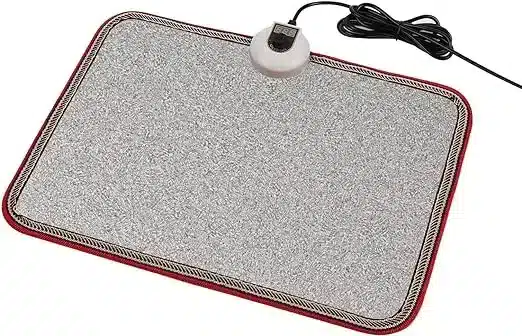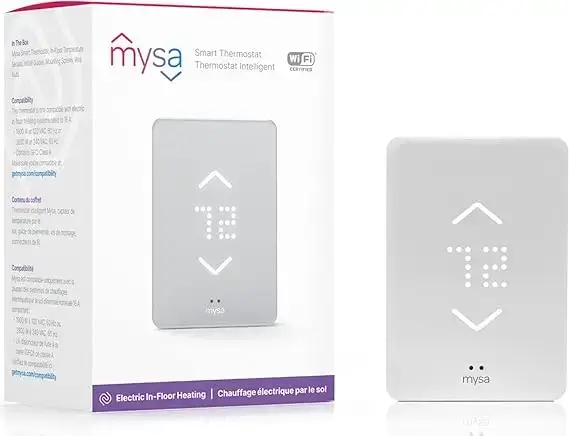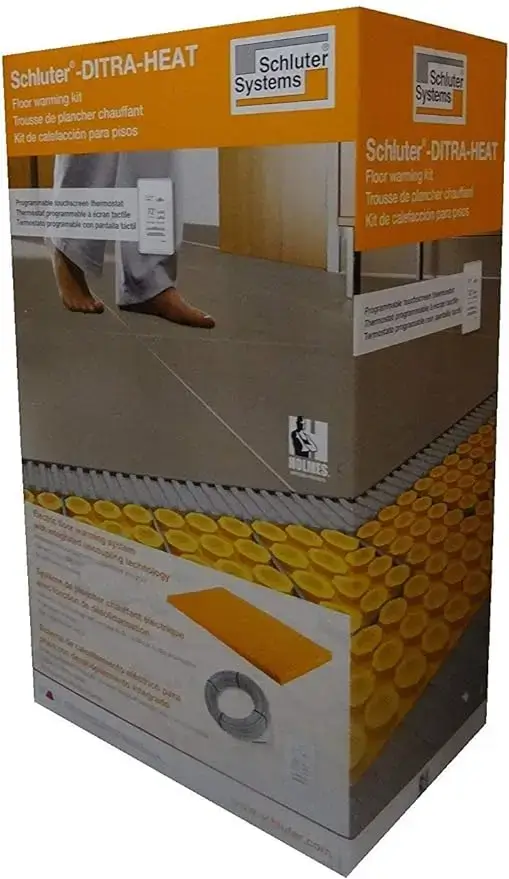Best Heated Floors Top Picks – Reviews And Information
Table of Contents
Flooring is more than just a practical necessity; it’s a personal style statement and a reflection of one’s lifestyle. It impacts not only the aesthetics of a space but also its functionality and comfort. With innovations in materials and technology, the flooring world offers many options, each with unique benefits and considerations. The choices can be overwhelming, from eco-friendly bamboo and cork to luxurious stone and ceramic tiles. Yet, understanding the nuances of each material—its durability, maintenance, comfort underfoot, and suitability for different rooms—can transform your space into a haven of beauty and practicality.
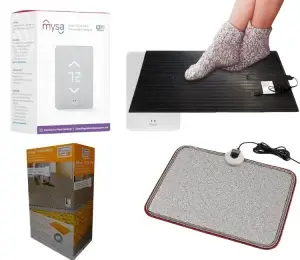
Our curated guide delves into the heart of what makes each flooring option stand out. We consider the latest trends, from rustic, reclaimed wood floors that bring a touch of history and character to a room to cutting-edge waterproof vinyl planks that marry convenience with style. Our reviews are grounded in thorough research and real-world testing, ensuring you have the most reliable and up-to-date information.
But it’s not just about the materials. We also explore the subtleties that make each flooring choice the right fit for specific spaces. From the moisture resistance required in bathrooms and kitchens to the comfort needed in living rooms and bedrooms, we guide you through selecting the perfect flooring that aligns with every aspect of your life. Moreover, we provide practical advice on installation, maintenance, and care, helping you preserve your floors’ beauty and longevity for years to come.
Join us on this journey through the world of flooring. Whether you’re a first-time homeowner, a seasoned renovator, or a professional designer, our guide is designed to inspire and inform, helping you to lay the foundation for spaces that are not only functional but truly transformative.
 OLYDON Electric Heated Floor Mats
OLYDON Electric Heated Floor Mats
Material: 92% Polyester Carbon fiber heating zones Battery: 7.4V 3000 mAh Temperature Settings: 3 levels
 Mysa Smart Thermostat for Electric in-Floor Heating
Mysa Smart Thermostat for Electric in-Floor Heating
Material: 92% Polyester Lining: Microfiber fleece Elasticity: 4-way Features:3
 Large and Portable Heated Rubber Mat
Large and Portable Heated Rubber Mat
Material: 90% Polyester Fleece-lined for warmth Snug and windproof Stretch: 4-way
 Schluter-Systems DITRA-HEAT (120V) Floor Heat Kit
Schluter-Systems DITRA-HEAT (120V) Floor Heat Kit
Material: 65% Polyester Care: Machine Wash Origin: Imported Sizes: Multiple
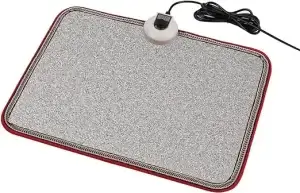
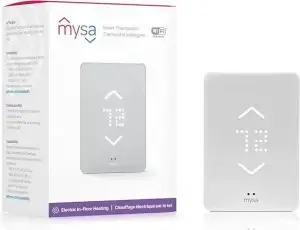
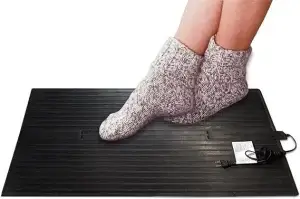
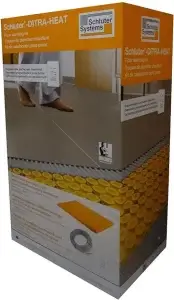
Top Picks And Reviews
When crafting detailed reviews and top picks for flooring options, it’s essential to focus on several key aspects that matter most to homeowners, designers, and architects. Here’s a structured approach to presenting top flooring choices, incorporating reviews and insightful information to guide decision-making:
1. Hardwood Flooring: The Timeless Choice
- Overview: Celebrated for its natural beauty and durability, hardwood flooring offers a timeless appeal that can elevate any room’s aesthetic. Available in varieties like oak, maple, and walnut, it can suit a range of styles from classic to contemporary.
- Pros: Adds value to homes, can be refinished multiple times, and has a wide variety of wood types and finishes.
- Cons: Susceptible to moisture damage, expensive, and require regular maintenance.
- Ideal for Living rooms, bedrooms, and dining areas where its elegance and warmth are best displayed.
2. Luxury Vinyl Plank (LVP): The Modern Innovator
- Overview: LVP has risen in popularity due to its remarkable durability and the ability to mimic the look of hardwood or stone at a fraction of the cost. It’s waterproof and ideal for areas prone to spills and moisture.
- Pros: Waterproof, affordable, easy to install and maintain, comes in various designs.
- Cons: Can emit volatile organic compounds (VOCs), not as valuable as real wood or stone.
- Ideal for: Kitchens, bathrooms, and basements where moisture resistance is crucial.
3. Ceramic or Porcelain Tile: The Versatile Artisan
- Overview: Known for its durability and water resistance, tile flooring is a versatile option for both indoor and outdoor spaces. It comes in various designs, from traditional to modern geometric patterns.
- Pros: Water-resistant, durable, suitable for high-traffic areas, low maintenance.
- Cons: Hard and cold underfoot, can be slippery when wet, grout requires cleaning to prevent staining.
- Ideal for: Bathrooms, kitchens, hallways, and patios where durability and moisture resistance are needed.
4. Bamboo Flooring: The Eco-Friendly Pioneer
- Overview: Bamboo flooring is praised for its sustainability, strength, and unique aesthetic. It offers a distinct look similar to hardwood but comes from a highly renewable source.
- Pros: Eco-friendly, durable, can be refinished, unique aesthetic appeal.
- Cons: Susceptible to scratches and moisture; quality varies by manufacturer.
- Ideal for Living areas and bedrooms with a warm, natural look and for eco-conscious homeowners.
5. Carpet: The Cozy Comforter
- Overview: Offering warmth and comfort underfoot, carpet is popular for bedrooms and living areas. It has many textures, colors, and materials to match any decor.
- Pros: Soft, warm underfoot, excellent sound absorption, and various styles and colors.
- Cons: Can harbor allergens, requires regular cleaning, not suitable for high-moisture areas.
- Ideal for: Bedrooms, living rooms, and playrooms where comfort and warmth are priorities.
Choosing the Right Flooring:
When selecting flooring, consider the look and the material’s durability, maintenance requirements, and suitability for your lifestyle and the room’s function. Whether you’re drawn to the natural elegance of hardwood, the resilience of LVP, the classic beauty of tile, the sustainable appeal of bamboo, or the cozy warmth of carpet, the right choice will enhance the beauty, comfort, and value of your home for years to come.
1. OLYDON Electric Heated Floor Mats
The J JINPEI Heated Thermal Underwear Top for Women is a cutting-edge garment designed to provide exceptional warmth and comfort in cold environments. Crafted with a blend of 92% polyester and 8% spandex, this top offers both flexibility and durability, making it an ideal choice for various outdoor activities or simply for staying cozy indoors during winter.
Key features of the J JINPEI Heated Thermal Underwear Top include its advanced heating system, which utilizes carbon fiber elements to deliver heat across crucial body areas like the shoulders, back, and waist. The innovative design ensures an even distribution of warmth, enhancing comfort and efficiency. With three adjustable temperature settings, users can easily control the level of heat based on their personal preferences and the external environment.
This top is powered by a 7.4V 3000 mAh rechargeable Li-Po battery, which provides a long-lasting heating experience. The battery is designed to be energy-efficient, ensuring hours of continuous warmth on a single charge. Additionally, the top is machine washable, making it easy to maintain.
Whether engaging in outdoor sports, embarking on a winter adventure, or simply seeking extra warmth during the colder months, the J JINPEI Heated Thermal Underwear Top offers a blend of comfort, technology, and style. Its sleek design and practical features make it a must-have for anyone looking to stay warm in challenging temperatures.
The J JINPEI Heated Thermal Top is made of 92% polyester and 8% spandex, featuring adjustable heating and a rechargeable 7.4V 3000 mAh battery.
- Material: 92% Polyester, 8% Spandex
- Heating Elements: Carbon fiber heating zones
- Battery: 7.4V 3000 mAh rechargeable Li-Po
- Temperature Settings: 3 levels (High, Medium, Low)
- Care: Machine washable
Pros
- Efficient heating with adjustable temperature.
- Durable and flexible material.
- Rechargeable battery for extended use.
- Machine washable for easy care.
Cons
- Needs frequent battery charging.
- Higher cost than standard thermal wear.
Overview
The J JINPEI Heated Thermal Underwear Top is a specialized garment for enhanced warmth in cold conditions. It combines the efficiency of carbon fiber heating elements with the comfort of a polyester and spandex blend. The top features three adjustable temperature settings powered by a 7.4V 3000 mAh battery, ensuring consistent heat distribution. Although it offers superior warmth and is machine washable, it requires regular battery charging and might be pricier than regular thermal wear. The limited range in sizes and colors and the need for careful handling of its electronic parts are considerations for potential users.
2. Mysa Smart Thermostat for Electric in-Floor Heating
Thermal Underwear for Men is a premium, fleece-lined base layer set, perfect for braving the cold in various settings, from outdoor adventures to everyday comfort. Expertly crafted with a blend of 92% polyester and 8% spandex, this thermal set promises warmth and flexibility. The microfiber fleece lining enhances heat retention, ensuring you stay cozy in the chilliest conditions, while the elastic outer layer of spandex allows for free movement without restriction.
Designed for active lifestyles, this thermal underwear set features moisture-wicking and quick-drying capabilities, keeping you dry and comfortable during intense activities or long periods outdoors. Whether hunting, skiing, or needing an extra layer for the winter months, these thermals adapt to your needs. Available in various colors and sizes and with different neck and fly options, the Romision Thermal Underwear set is functional and versatile, making it an ideal choice for men seeking comfort and performance in cold weather.
romision Thermal Underwear for Men, Fleece Base Layer Top and Bottom Set, Insulated Long Johns for Hunting Outside in Cold Weather.
- Material: 92% Polyester, 8% Spandex
- Lining: Microfiber fleece
- Elasticity: 4-way stretch design
- Features:
- Excellent heat retention
- Moisture-wicking and quick-drying
- High flexibility for movement
Pros
- Warmth: Fleece lining for cold weather.
- Moisture-Wicking: Keeps you dry during activities.
- Flexible Fit: 4-way stretch for movement.
- Variety: Multiple styles, colors, sizes.
- Easy Care: Machine washable.
Cons
- Breathability: Less than natural fibers.
- Sizing Issues: Fit might vary.
Overview
The Romision Thermal Underwear for Men is a specialized clothing set for cold weather conditions. It includes a top and bottom blend of 92% polyester and 8% spandex, ensuring warmth and flexibility. The key features include a microfiber fleece lining for superior heat retention, a 4-way stretch design for comfortable movement, and moisture-wicking properties for keeping dry. Available in various styles, colors, and sizes, this thermal underwear set caters to different preferences and needs. While it offers excellent warmth and comfort, potential buyers should consider factors like breathability, fit, style preference, price, and long-term durability. This set is ideal for outdoor activities in cold weather or as an additional layer of warmth under regular clothing.
3. Large and Portable Heated Rubber Mat
romision Thermal Underwear for Men Long Johns Fleece Lined Hunting Gear Bottom Top Set Base Layer. Available in sizes ranging from small to extra-extra-extra large.
- Fabric: 90% Polyester, 10% Spandex.
- Lining: Fleece-lined for warmth.
- Fit: Snug and windproof.
- Stretch: 4-way stretch for mobility.
Pros
- Durable and flexible material.
- Warm with fleece lining.
- Moisture-wicking and odor control.
- Versatile for various uses.
- Wide range of sizes.
Cons
- Snug fit may not suit all.
- Less breathable fabric.
Overview
4. Schluter-Systems DITRA-HEAT (120V) Floor Heat Kit
Underwear for men that is thermal For cold weather, men should wear long johns, long underwear, and base layers made of long underwear.
- Material: 65% Polyester, 27% Nylon, 8% Spandex
- Care: Machine Wash
- Origin: Imported
- Sizes: Multiple options available
Pros
- Durable and comfortable material.
- Excellent for retaining heat.
- Moisture-wicking for dryness.
- Versatile for various activities.
- Easy to wash.
Cons
- Limited breathability.
- Potential sizing issues.
Overview
This Thermal Underwear for Men is designed to provide warmth and comfort in cold weather conditions. Made from 65% Polyester, 27% Nylon, and 8% Spandex, it offers durability, flexibility, and a comfortable fit. The key features include excellent heat retention thanks to its ultra-soft fleece lining, moisture-wicking properties to keep the body dry, and a 4-way stretch fabric that ensures ease of movement. Suitable for a range of outdoor activities, it’s also machine washable for easy care. However, it may have limited breathability, potential fit issues due to sizing, a more functional than fashionable design, a tendency to be overly warm in milder conditions, and an imported product, which may not align with preferences for local goods.
Heated Floors Information
Definition of Heated Floors
The rest of the interior elements stand on floors, which are the bottom surfaces of rooms or areas within buildings. They lend a building its structural integrity and greatly enhance its visual attractiveness, practicality, and general comfort, making them an essential part of any well-designed and built building. Natural materials like bamboo, stone, and hardwood are just a few examples of the many flooring alternatives available. Synthetic options include vinyl, laminate, and carpet. You may customize each material to meet the individual requirements of the space. Each material has its own unique features when it comes to durability, maintenance, comfort, and visual effect. For example, some materials are water resistant, others are durable under foot activity, and yet others harmonize with interior design themes. Floors are important for more than just their utilitarian use; they also help keep a room cool and quiet, which improves its energy efficiency and makes it more pleasant to live in.
Components of Heated Floors
The construction and design of floors involve several components that work together to ensure durability, functionality, and aesthetics. Understanding these components is essential for construction professionals and homeowners involved in building or renovating spaces. Here’s a breakdown of the primary components of floors:
Subfloor
The subfloor is the foundational layer that provides structural support. It’s typically made of plywood, concrete, or oriented strand board (OSB) and is directly attached to the floor joists. The subfloor is crucial for the stability of the flooring above and helps distribute weight evenly across the floor structure.
Underlayment
Underlayment is a layer placed between the subfloor and the finish flooring. Its purposes include providing extra insulation, reducing noise, smoothing minor subfloor imperfections, and, in some cases, acting as a moisture barrier. Materials used for underlayment can vary, including foam, cork, rubber, or felt, depending on the type of finish flooring and the requirements of the space.
Joists
Floor joists are horizontal structural elements that support the subfloor. They are part of the framing system and are typically made of wood or steel. The spacing, size, and span of joists are carefully calculated based on the load they need to carry and the type of building construction.
Finish Flooring
It is the topmost layer that is visible and walked upon. Finish flooring materials vary widely, including hardwood, laminate, vinyl, ceramic tile, and carpet. The choice of finish flooring affects the room’s aesthetic, comfort, and the floor’s maintenance and durability.
Baseboards and Trim
Baseboards and trim are not structural components but play an important role in the finished look of a floor. They cover the joints between the floor and the walls, help protect the walls from damage, and can add decorative elements to the space.
Damp Proof Membrane (DPM)
A DPM may prevent moisture from rising into the floor structure in some floor constructions, especially those involving concrete subfloors. This component is crucial in areas with high moisture levels or buildings without a ventilated crawlspace or basement.
Insulation
The floor structure may include insulation and soundproofing to improve thermal efficiency. It is especially common in upper-story floors of homes and in buildings where energy efficiency or noise reduction is a priority.
Vapor Barrier
A vapor barrier might be used with or as part of the underlayment to prevent moisture from passing into the floor structure. It is particularly important in areas prone to dampness or with specific flooring types that are sensitive to moisture.
Layers of Fabric
The layers of fabric in textiles, especially those designed for specific functions like fashion, technical, or home furnishings, are carefully engineered to provide a range of properties such as strength, durability, comfort, and aesthetics. These layers can be broadly categorized into three main types, each serving distinct purposes:
Base Layer (Foundation)
- Purpose: This is the primary layer that forms the foundation of the fabric. In clothing, it’s the layer in direct contact with the skin and is designed for comfort, moisture-wicking, and thermal regulation. For other textile applications, the base layer provides structural integrity.
- Materials: Common materials for the base layer include cotton, polyester, wool, and specialized synthetic fibers designed to manage moisture and temperature.
Middle Layer (Insulation)
- Purpose: The middle layer is primarily responsible for insulation and sometimes for absorbing impact in technical textiles. In apparel, it helps retain body heat in cold conditions and cushions and provides comfort in items like padded jackets or performance gear.
- Materials: Materials used for the middle layer often include wool, fleece, down, or synthetic insulating fabrics that trap air to retain warmth while being breathable.
Outer Layer (Protection)
- Purpose: The outermost layer is designed to offer protection from external elements. It includes resistance to wind, water, abrasion, and UV radiation. In fashion, the outer layer also plays a significant role in the garment’s aesthetics and durability.
- Materials: For the outer layer, materials such as nylon, polyester, leather, and treated fabrics (e.g., waterproof, windproof, and UV-resistant coatings) are commonly used.
Specialty Layers:
In addition to these primary layers, some fabrics may include specialty layers designed for specific functions:
- Interlining: Used between layers to provide additional body, warmth, or support to the fabric. Common in coats, jackets, and other structured garments.
- Lining: Often used to improve the inside finish of a garment, making it more comfortable, easier to put on, and adding to its durability by reducing stress on the outer fabric.
- Coatings and Laminates: Applied to the surface of fabrics to enhance their functional properties, such as waterproofing, fire resistance, or reflectivity.
Technical and Composite Fabrics:
Some advanced textiles may incorporate layers of different materials bonded together to create composite fabrics. These are especially common in technical and performance wear, medical textiles, and industrial applications. They may include layers of mesh for breathability, membranes for waterproofing, or reflective materials for visibility.
Each layer of fabric, from the base to the outer surface, plays a crucial role in the overall performance and functionality of the textile product. The selection of materials and the technology used to combine these layers determine the final fabric’s quality, comfort, and durability.
Heating Elements
Heating elements are essential components in various appliances and systems, converting electrical energy into heat through Joule heating. They are used in various applications, from domestic appliances like toasters and hair dryers to industrial furnaces and environmental control systems. A heating element’s design and material composition depends on its intended use, including the required operating temperature, efficiency, and longevity. Here’s an overview of common types of heating elements and their characteristics:
Resistance Wire Heating Elements
- Materials: Typically made from alloys such as Nichrome (Nickel-Chromium), Kanthal (FeCrAl), and Cupronickel (Copper-Nickel), chosen for their high resistance and ability to withstand high temperatures.
- Applications: Found in small household appliances like toasters, hair dryers, and electric ovens, as well as in industrial heaters and kilns.
- Characteristics: These elements work by passing an electric current through the wire, causing it to heat up due to its electrical resistance.
Mica Heating Elements
- Materials: Consists of a resistive heating wire wrapped around or sandwiched between sheets of mica, a naturally occurring mineral that is an excellent electrical insulator and can withstand high temperatures.
- Applications: Commonly used in hair dryers, space heaters, and toasters where compact and efficient heating is required.
- Characteristics: Mica heaters offer excellent thermal stability and efficiency, with the added benefit of being lightweight and thin.
Ceramic Heating Elements
- Materials: Made from ceramic materials that are good insulators and can endure very high temperatures. The heating wire is embedded within or wound around ceramic forms.
- Applications: Used in space heaters, industrial furnaces, and applications requiring long-lasting, efficient heat distribution.
- Characteristics: Ceramic elements are known for their durability and even heat distribution, capable of reaching higher temperatures than metallic elements.
Quartz Infrared Heating Elements
- Materials: Consists of a tungsten wire (resistance wire) encased in a quartz glass tube, sometimes filled with halogen gas to increase efficiency and lifespan.
- Applications: Widely used in infrared heaters, toasting, industrial drying processes, and outdoor heaters.
- Characteristics: These elements produce infrared radiation that directly heats objects and surfaces rather than the air around them, offering efficient and targeted heating.
PTC (Positive Temperature Coefficient) Elements
- Materials: Made from special ceramic materials that increase resistance as temperature rises, leading to an automated heating effect.
- Applications: Used in automotive heaters, hair straighteners, and environmental heaters.
- Characteristics: PTC heaters are safe and energy-efficient, as they self-regulate to avoid overheating and provide consistent heat output.
Carbon Fiber Heating Elements
- Materials: Utilize carbon fibers due to their high surface area and excellent thermal efficiency.
- Applications: Found in high-end space heaters, heated clothing, and battery-powered applications.
- Characteristics: Carbon fiber elements are lightweight, generate uniform heat, and have a quick response time but are typically more expensive than traditional heating elements.
Induction Heating Elements
- Materials: This is not a heating element in the traditional sense but a method that uses electromagnetic fields to heat conductive materials directly.
- Applications: Used in induction cooktops, industrial metal processing, and sealing.
- Characteristics: Highly efficient and controllable, induction heating is fast and precise, with the heat generated directly in the object being heated.
The choice of heating element is critical for heating devices’ performance, efficiency, and safety. It must match the application’s specific requirements, including the desired temperature range, heating speed, and environmental conditions.
Features of Driveway
A driveway is more than just a vehicle path; it’s a significant feature of your property that can enhance functionality and curb appeal. Several features should be considered when designing or renovating a driveway to ensure it meets your needs and complements your home’s aesthetic. Here are some key features of a well-designed driveway:
Material Selection
- Asphalt: Popular for its durability and cost-effectiveness, asphalt driveways are easy to install and repair but require regular maintenance.
- Concrete: Offers versatility in design through stamping and coloring; concrete driveways are durable and long-lasting but expensive to install.
- Gravel: Affordable and easy to maintain, gravel driveways offer a rustic appeal but may require regular topping up and weeding.
- Pavers: Brick, stone, or concrete pavers provide a high-end look with various design options, though they can be pricey and require a stable base to avoid shifting.
Durability and Maintenance
- Thickness and Foundation: The driveway material’s thickness and the foundation’s quality are critical for durability, especially in areas with heavy vehicle traffic or extreme weather conditions.
- Sealing and Coating: Regular sealing for asphalt and concrete driveways can extend their lifespan by protecting against weathering and stains.
- Drainage Solutions: Proper drainage is essential to prevent water accumulation that can lead to surface damage or foundation issues.
Design and Aesthetics
- Color and Texture: The color and texture of the driveway material can complement your home’s exterior and landscape. Stamped concrete and pavers, in particular, offer a range of patterns and styles.
- Landscaping Integration: Incorporating landscaping elements like border plants, lighting, and water features can enhance the driveway’s visual appeal and create a welcoming entrance.
- Lighting: Strategic lighting can improve safety and security while highlighting your home’s driveway and architectural features at night.
Functionality and Accessibility
- Width and Length: The driveway should accommodate the size and number of vehicles you own, with additional space for maneuvering if needed.
- Slope: A gentle slope ensures proper drainage but should not be so steep to hinder vehicle access or become slippery when wet.
- Turning Areas and Additional Parking: A turnaround area or extra parking space can add convenience and functionality for larger properties.
Safety Features
- Non-slip Surface: Textured finishes on concrete or the natural traction of gravel can provide safer walking and driving surfaces in wet or icy conditions.
- Visibility: Clear markings, adequate lighting, and unobstructed sightlines ensure drivers and pedestrians can safely navigate the driveway.
Environmental Considerations
- Permeable Paving: Options like porous concrete, pavers, or gravel allow water to soak through, reducing runoff and promoting groundwater recharge.
- Heat Reflectivity: Light-colored materials can reflect sunlight and reduce heat absorption, minimizing the heat island effect in urban areas.
Regulatory Compliance
- Local Zoning Laws: Compliance with local regulations regarding driveway dimensions, materials, and placement is crucial to avoid legal issues.
- Permits: Some regions require driveway construction or renovation permits, especially if the work involves curb cuts or changes to public right-of-way areas.
Pros
- Attractive Finish: Offers a sleek, modern appearance with various colors and finishes that can complement any home exterior.
- Permeability: Allows water to drain through the surface, reducing puddles and minimizing the risk of flooding, making it an eco-friendly option by promoting groundwater recharge.
- Durability and Longevity: Provides a hard-wearing, durable surface that can last many years with proper installation and minimal maintenance.
- Low Maintenance: Unlike gravel driveways that can scatter or asphalt that may need regular sealing, resin-bound surfaces are relatively easy to maintain, requiring occasional sweeping and washing to remove debris and dirt.
- UV Stability: Many resin-bound surfaces are UV resistant, which means they won’t fade or discolor over time due to sun exposure.
- Weed Resistant: The seamless surface prevents weeds from pushing through, a common issue with block paving or concrete cracks.
- Versatility: It can be applied over existing driveway materials like concrete or tarmac, provided the base is suitable, saving time and the cost of a full excavation.
- Quick Installation: Resin-bound driveways can be installed relatively quickly, and the surface is usable soon after installation, minimizing disruption.
- Cost: Typically more expensive than simple solutions like gravel or basic concrete due to the required materials and specialized installation process.
- Professional Installation Required: The Installation of a resin-bound driveway requires skilled contractors familiar with the product to ensure a smooth, durable surface. Incorrect Installation can lead to cracking, water pooling, or premature degradation.
- Temperature Sensitivity: The resin can be sensitive to extreme temperatures. In very hot conditions, the surface can soften, and in cold conditions, it can become more brittle, potentially leading to damage if not properly formulated for the climate.
Final Thought
Aesthetics, cost, practicality, and maintenance are the four key considerations when selecting a driveway material. Because of their adaptability in aesthetics and functionality, resin-bound driveways are a great option for many houses because they are long-lasting, eco-friendly, and aesthetically pleasing. But, it would help if you considered the increased upfront cost and the necessity of hiring a professional installer. Your priorities, such as design flexibility, eco-friendliness, or price, will determine the ideal selection. An investment in your home’s usefulness and aesthetics that pays off in the long run is a well-chosen driveway that adds value to your property.
Heated IT Articles

